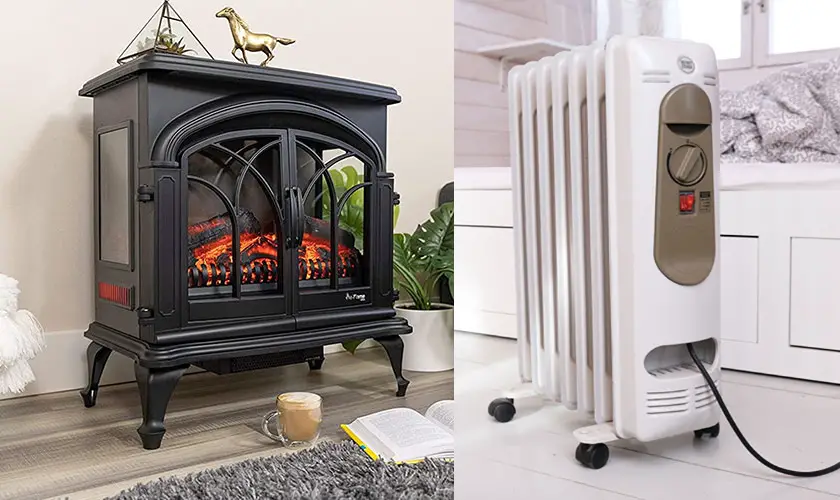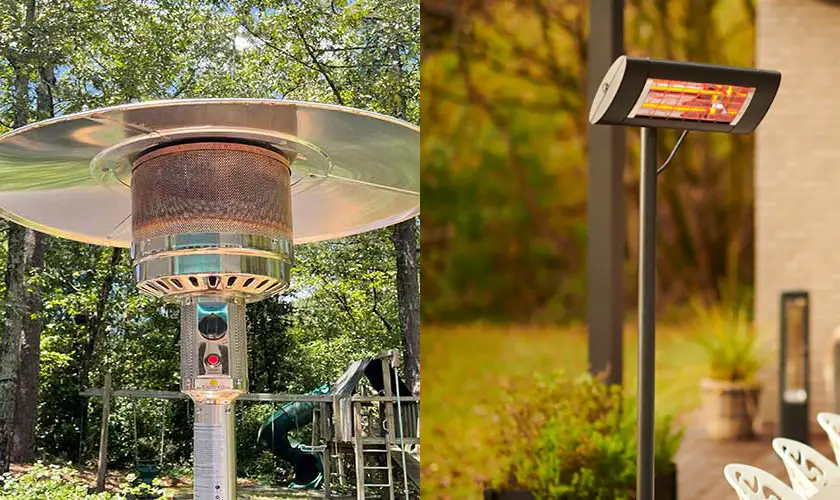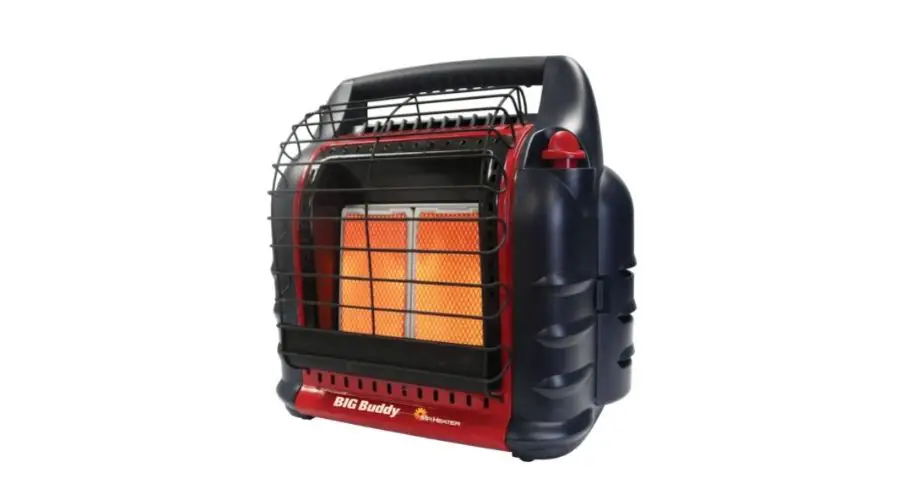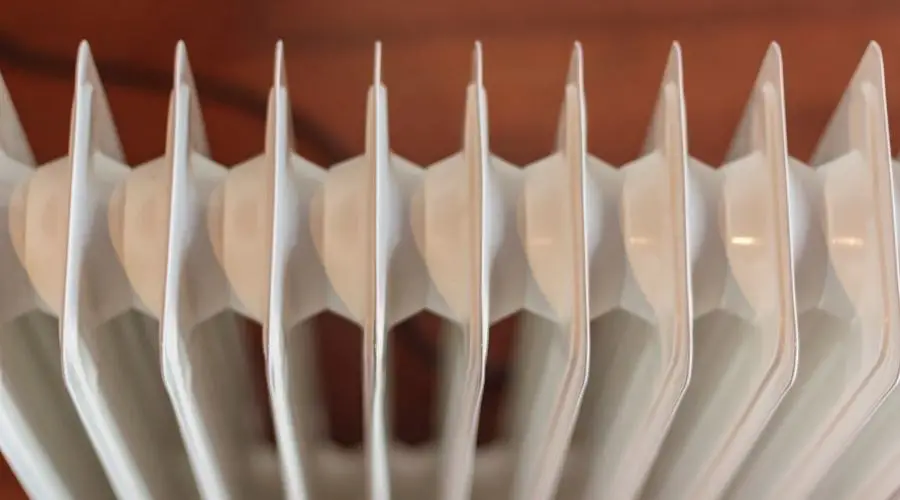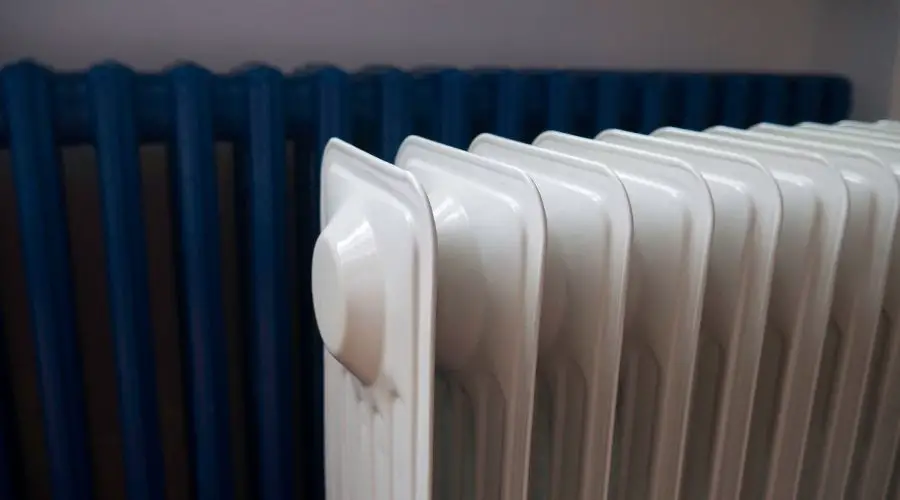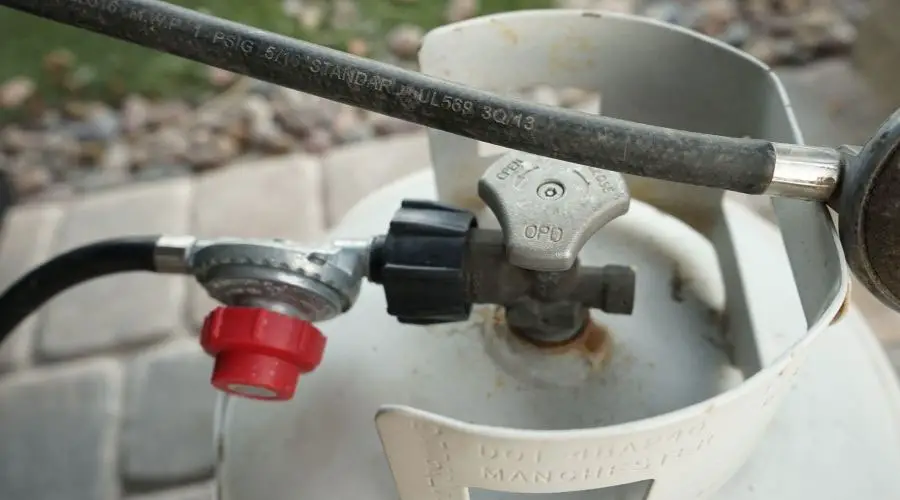
In the need to spend more time outdoors, propane heaters have become very popular in households. They work by radiating heat and are designed for outdoor spaces.
In contrast to space heaters, which warm the air, propane heaters emit heat via electromagnetic waves meaning that the heat will travel through the air until it reaches an object, which it needs to heat.
They come in different shapes and sizes and also with additional BTUs. BTU, or British Thermal Units, are a measurement for thermal energy.
The number of BTUs tells you how powerful the heater is and how much it can emit heat around it. It is essential to know what kind of heater to use since heaters that are too small or too large will not have the same purpose.
What Should I Know Before Lighting A Propane Heater?
Tabletop heaters are portable and have almost the same characteristics as freestanding heaters. They come in many designs and shapes, some even designed to look like an ordinary lamp.
Whatever the look they have, their purpose is to heat. Because they are smaller than freestanding heaters, they also heat at a lower BTU, which means they can’t cover a larger area.
1. Get The Right Size
Choosing the correct size is one of the most important choices you need to make when purchasing a propane heater.
When you have one too big for the area you need it for, propane heating units can be dangerous because a propane heater can emit a significant amount of heat and carbon monoxide.
2. It Uses Oxygen To Burn
As the name says, the propane heater uses propane gas to run. Propane is efficient and clean-burning. Usually, in gas form, it is compressed into liquid form and packed in tanks. When lighted, propane, like any other fuel, uses oxygen to burn.
3. The Igniter
All heaters come with an igniter. This part is responsible for creating a spark that you use to light the heater. Propane heaters use a piezoelectric igniter.
4, Material Used
The material used is the quartz crystal, whose purpose is to create an electric potential. When you apply pressure, the mechanism strikes a spring-loaded hammer to produce a spark.
The gas pipe is responsible for delivering the gas to the heater. As the gas travels through the line, it will make a sound, so be sure to listen to it.
5. Smell Gas? Turn Your Heater Off
Remember that if you smell gas, you should immediately turn the heater off and not light it under any circumstances. A gas leak will cause a hazard if lit.
If this happens, the gas pipe may not be adequately connected, requiring repair. Make sure you consult a professional about this problem before trying to fix it yourself.
Sometimes the gas pipe can be clogged. You can detach it from the gas tank and the heater and clean it.
Very commonly, you will hear that propane heaters have a pilot. The pilot is a tiny flame that burns continuously. The pilot’s purpose is not to light the heater from the igniter every time.
6. Control Component
Propane heaters often come with a control component. While some heaters have a thermostat, the control component’s purpose is to control the flame on the heater. It allows you to set the fire on high or low.
Once in place, before you turn it on, you should perform a few last-minute safety tests. Before you try to turn on your heater, you need to check the tank’s elements and components; every one of them is responsible for the safest use of the heater.
7. Know Your Heater’s Purpose
A very common but dangerous mistake people make is bringing the heater inside. Almost every tabletop propane heater is meant to be used outdoors and should not be inside for safety reasons. However, you can use some propane heaters inside.
Heaters designed indoors have extra safety components, such as a low oxygen sensor, which prevents carbon monoxide poisoning.
Specific safety measures need to be taken into account when you’re operating with a heater. As said above, propane burns oxygen to work. Bringing a powerful outdoor heater into a small room will quickly sear the room’s oxygen, and the danger of carbon monoxide poisoning intensifies.
8. Check The Tank
Propane heaters use portable propane tanks to run. Tanks come in different sizes, but the usual is the 20-pound tank for a freestanding heater. Regardless of its size, check that the tank is full before you light the heater. You can find the tank at the base of the heater. You won’t burn the heater if you don’t have enough fuel to run it.
A half-full tank will light the heater, but it also means that the fire will die quicker than with a full tank. If you plan to use it for a longer time, ensure it is complete.
9. Check The Regulator
A regulator is a small circular knob, usually found at the bottom of the heater. Its purpose is to control the gas flow and regulate the pressure inside the heater. If you notice that it is damaged – cracked, or worn out – you will have to replace it before turning on the heater.
Once you have a suitable heater and set it up correctly outdoors, you must learn how to light it. Upon moving your propane heater into place, be careful. They can be heavy, so it’s advisable to use a trolley to move them around to prevent injury.
Now that you’ve learned the heater’s main components, purposes, and sure safety measures, here is a step-by-step guide on operating it and how to light it. We will walk you through burning the heater with and without the pilot flame.
How Do You Light A Propane Tabletop Heater?
Lighting Without A Pilot Flame
- Open the valve: Each gas tank on the top has a valve that allows the gas flow. For safety, it is turned tightly to prevent gas leaks and danger. Turn the valve the other way until you feel that you can’t turn it anymore.
- Turn the regulator: Set the regulator on the ‘low’ setting, press it, and don’t let go.
- Press the ignition button: Press the ignition button 4-5 times until the fire has started.
- Let the gas flow: Don’t let go of the regulator to let the gas flow into the head of the heater. After a couple of seconds, release the regulator and set it to a desirable setting.
You can use matches or a lighter if your igniter doesn’t work. You will notice if the igniter is not working if it’s not producing a spark.
When you inspect the heater’s head, you notice that it has two holes on the lower side. You can put the lighter or a match through that hole and light the heater using the same steps as above.
Some heaters don’t have holes on the lower side, but that doesn’t mean you can’t light them. Inspect the screws around the mesh on the heater.
On the side, one of them will have a wing-shaped cover, which looks like a small guitar pick. Lightly unscrew the screw that is holding it. You do not have to remove it; turn it just enough to loosen it.
When the screw is loose, you can move the wing around. You will notice that it was covering a hole. You can insert long matches or a lighter with an extended nozzle to light the heater.
Lighting With A Pilot Flame
- Turn the regulator: Turn the regulator knob into a ‘pilot’ position and press on it for around 45 seconds up to 1 minute to ignite the pilot flame.
- Press the ignitor button: Press the ignitor button 4-5 times until you see the fire spread across the burner.
- Regulate the fire: Release the regulator knob and turn the regulator on to the desired setting.
Whichever method you use to turn on the heater, always take safety precautions when operating it. Be sure not to put your face near the mesh where the fire is lit, as you don’t want any surprises that can hurt you.
Lighting a propane heater is an easy task, but it requires user responsibility. Propane heaters have secure and straightforward mechanisms to ignite and automatic means to shut down in the event of fire or leakage of gas quickly. As a matter of protection, you should be conscientious so that the heater will work safely.
Depending on the type of heater, lighting directions can differ. Carefully read the manufacturer’s instructions. You should turn the knob counterclockwise to release the airflow to the burner. You can achieve it by holding it until you hear the air going through the burner.
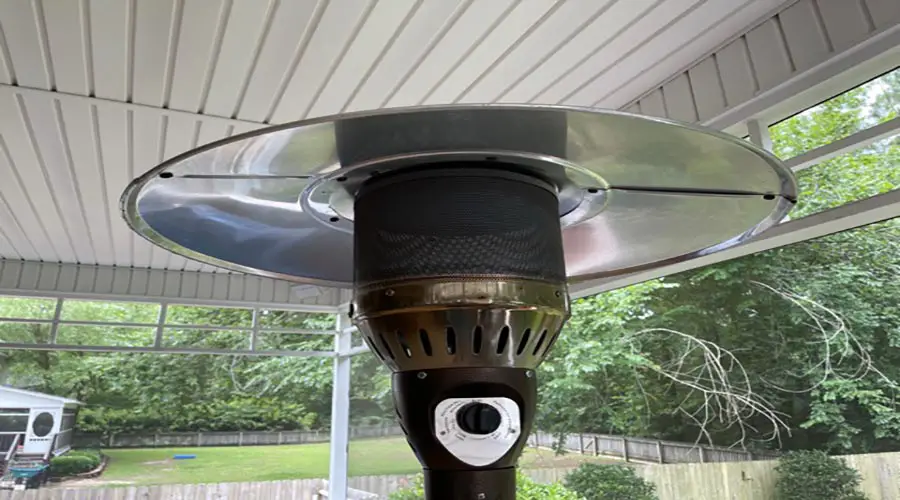
How To Turn Off The Propane Heater Properly
You must turn your heater off safely and according to the manufacturer’s instructions when you are finished with heating.
First, you will need to flip the dial of the regulator to the ‘off’ spot. This regulator currently sits at the setting to which you have turned it, so you will need to turn it clockwise until it sits at the ‘off’ location.
It would be best to close the propane tank valve immediately after turning the regulator off. Open the panel and turn the valve in the opposite direction to when you turned to open it.
Keep turning until you feel like it is secured tightly. Otherwise, some propane can continue to leak out, which can be very risky.
After this point, your heater will remain very warm for about 10 minutes, so you should not touch or shift it at this stage. Ideally, you’d want to wait about 20 minutes for the heater to cool off.
You can separate the heater from your propane tank when the heater is thoroughly cooled down. You will need to twist and turn the rubber fastenings to do this before it is possible to detach the heater from the valve without the need for force. You risk causing damage to the rubber if you apply too much pressure.
If you use it regularly, you don’t have to detach the heater from the propane tank. Just make sure that you turn the valve of the tank slightly. Most heaters need a simple regulator to turn to shut it off, but we recommend staying safe and taking extra steps.
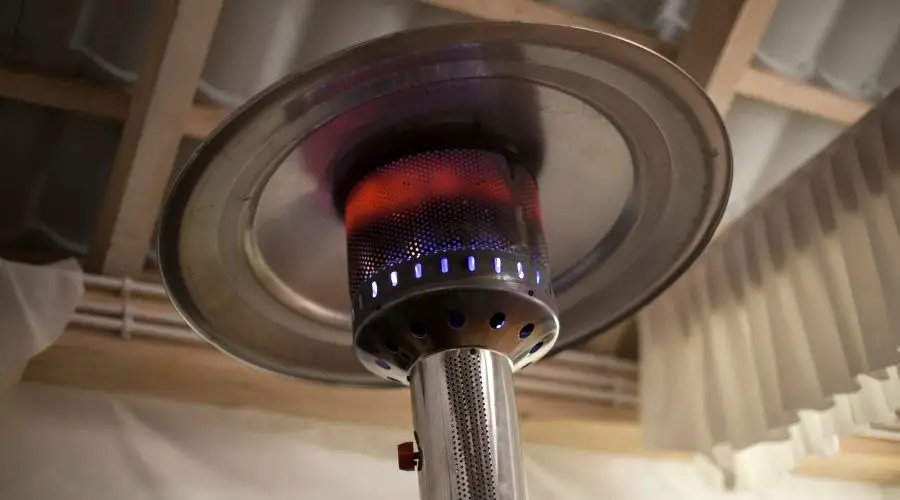
Why Will My Propane Heater Not Light?
Heaters can have problems from time to time, just like any other device. Being in this kind of situation is not unusual. It is a very normal thing. This issue is fixable, and besides, you can solve it yourself. The right skills, resources, and some dedication are everything you need.
When a propane heater is not lit, it often happens that the propane heater may “believe” that the flame is in some way faulty, activating the safety functions of the propane heater and causing it to shut down. The issue could be a real issue, or it may be a problem with the sensor.
Common Issues May Occur
At first, some common problems cause the heater not to light. One of the first problems can be traced back to the propane tank. Usually, if the heater won’t burn, the gas is not flowing to the heater. Make sure that the valve is opened on the tank. Also, the problem may be that the tank is empty.
Before you start to fix and inspect the heater’s problems:
- Make sure that the gas supply is turned off completely.
- Start with the full closure of the supply.
- Allow it some time to cool, and then continue with a soft cloth to remove the exterior surfaces’ dust.
As they contribute to the most significant heat generated, the flame burner is one of the pivotal parts of the heater. However, if you notice that it’s low, it’s a low gas pressure indicator.
1. Check The Valve
Check the valve to see the pressure of the gas. If all seems right, check if any of the tubes or hoses are damaged or bent. If everything looks OK, then maybe it’s time to put on a new cylinder. Turn the valve ‘off’ and replace it with a new one afterward.
2. Pilot Flame Malfunction
It is possible to trace most propane heater problems to a malfunctioning pilot flame. If there is a standing pilot in your propane heater, you should be able to see it through a small opening near the control knob. The pilot should be about an inch tall and mainly blue.
The pilot tube must be cleaned if it’s flickering, broken, tiny, orange, or yellow-colored. You can clean it out by turning off the gas first and then gently poking a needle into the top of the pilot tube.
3. Placement Issues
Most of the time, the heater does not remain lit because of the placement. Holding the heater out in the open could trigger this issue sometimes. With the propane heater pilot, a draft may start problems, in which case your best choice is to remove the draft source.
There are several ways to relocate your heater. If your area is drizzling, put the heater within a canopy or sunshade. You may position it before a wind barrier to shield the heater from the wind.
Tall walls constitute a traditional wind barrier. Wall corners may be an ideal all-weather position for the heater.
Since the heater stays out in the open, dirt is most likely causing problems. Even slight winds carry dust and dirt particles that can get stuck in your heater most of the time.
4. Thermocouple Issue
The problem can be in a thermocouple. Like the thermostat, the thermocouple is a heat-sensitive system, a safety mechanism that prevents unburned gas from being released.
The flame heats the thermocouple when you light the pilot, and when it gets hot enough, it signals the valve to remain open to keep the pilot lit.
If the thermocouple is too far from the flame, the pilot will go out, and you can generally fix this by only moving it closer using a pair of pliers.
If the thermocouple wears out, unclipping the bulb, unscrewing the wire from the gas valve, and reversing the process to mount a new one is a simple task.
5. Clean Your Heater
You can clean the heater with a sponge soaked in detergent water. But first, make sure to turn off the gas completely. Wipe the heater with a sponge.
Make sure that the sponge is damp and not dripping with fluid. Using a microfiber cloth, wipe off spiderwebs and dust. Before you use the heater again, ensure it is entirely and thoroughly dried.
6. Inspect For Irregularities
The burner should always be clear to have an even distribution of the heat by taking it out and searching for any elements that may create a blockage. Regularly inspect it for any irregularities when the heater is off and has cooled down.
An inlet underneath the burner enables gas to combine with air. This component should also be dirt-free and should have no blockage whatsoever.
7. Check The Bug Screen
It would be best to clean the bug screen to guarantee that your fire is safe and insect-free. The screen serves as a guard for light-attracted insects. Remove the bug screen while washing, give it a proper wash with water and dry properly. To not get a nasty stain on it, you should do this as much as possible.
8. The Tank May Be Empty
The heater will often stay lit, but the flame is too low, meaning the gas’s pressure may be too low. A small fire can occur when the outside temperature is less than 40°F and the tank is less than a quarter full. In such low temperatures, the tank must be complete.
9. The Igniter
Check if the igniter produces a spark. You’ll see a spark when you turn off the gas and press the ignitor. Remove the ignition lead at the rear of the igniter, put your thumb over the end and click the red button to ensure the igniter is working correctly – you should feel a slight sting. If the igniter is close to the thermocouple, verify that the igniter lead is linked to the igniter itself.
10. Remove The Electromagnetic Valve
If there are no blockages and the thermocouple works OK, remove the electromagnetic valve (located at the rear of the gas control valve) and replace it with a new one if it is worn out or damaged. The electromagnetic valves fail due to low temperatures and frost.
Safety Measures For Propane Heaters
When you have a propane heater, there are a few safety measures that you should always consider. Propane heaters come with specific safety components, but you should always care about the heater and its operation.
1. Safety Markings
Check if the heater has a safety rating. It should be marked as Compliance Safety Accountability (CSA), meaning that the heater has undergone rigorous standards and is safe for use.
2. Tip-over Protection
Your heater should also have an anti-tilt feature, commonly seen on tabletop and freestanding heaters. Anti-tilt prevents the heater from tipping over when it’s bumped.
This also means that the heater is sturdy. Modern tabletop and freestanding heaters have an automatic switch, which turns off the heater when it tips over.
3. No Flammable Objects Allowed
Some materials might become a fire hazard if the heater is too near to objects. Ensure that the heater has sufficient clearance from side to side and top to bottom. Propane heaters should not be installed near flammable materials, for example, plants and grass, fabrics and cloth, gas tanks, lighter fluid, etc.
4. Have A Fireproof Floor & Fire-resistant Objects
Invest in a firm and fire-proof surface if you want to put your patio heater on the lawn so the heater stays stable and does not fall over. Always observe the distance instructions given by the manufacturer.
While your patio heater’s anti-tip feature should be enough, it is always a good idea to take additional measures to protect and support the device with stabilizers such as weights, fire-resistance fasteners, or sandbags.
5. Turn The Valve Off When Not Being Used
Close the propane tank’s valve and turn off the switch when your heater is not in use. Inspect all valves and hoses daily for leaks. Don’t use the device until you have fixed any leak problems. It would be best to store spare propane tanks away from heat or open flames.
6. Keep It Clean
Keep all the fittings and connections clean. Make sure the valve outlet of the propane cylinder is clear as well. Check all the connections and fittings for leaks using soapy water during set-up; check how to do it here. It would be best if you only used it as a heating device. Do not modify it or use it with other appliances in any way.
7. Keep It Far Away From The Wind
There is some weather-resistant protection on most patio heaters, but the wind is the worst enemy of your patio heater. The heater should be put in non-windy areas wherever possible. Not only will this be more convenient for you, but it will assist in fuel efficiency as the device will not work as hard to protect against active winds.
8. Dry Areas Are Your Best Friend
Do not leave your heater out in the rain. Even though heaters can be waterproof, keeping them wet is not a good idea. Constant exposure to water can damage the materials, and it will shorten the lifespan of your heater. Use a protective cover for the heater if you are leaving it outside.
9. Turn Your Heater Off When Not In Use
When you turn off the heater, give it time to cool down before moving it anywhere. Tabletop heaters are easy for one person to move, but if you own a freestanding heater, get some help to move it, as they can be pretty heavy. Some heaters have wheels for more accessible transportation.
10. Pets & Kids Stay Away
If you have pets or kids, ensure they stay out of the way. Reduce the foot traffic near the heater to prevent any accidents from happening. Pets can try and jump on the heater, while playful children can accidentally knock it over.


